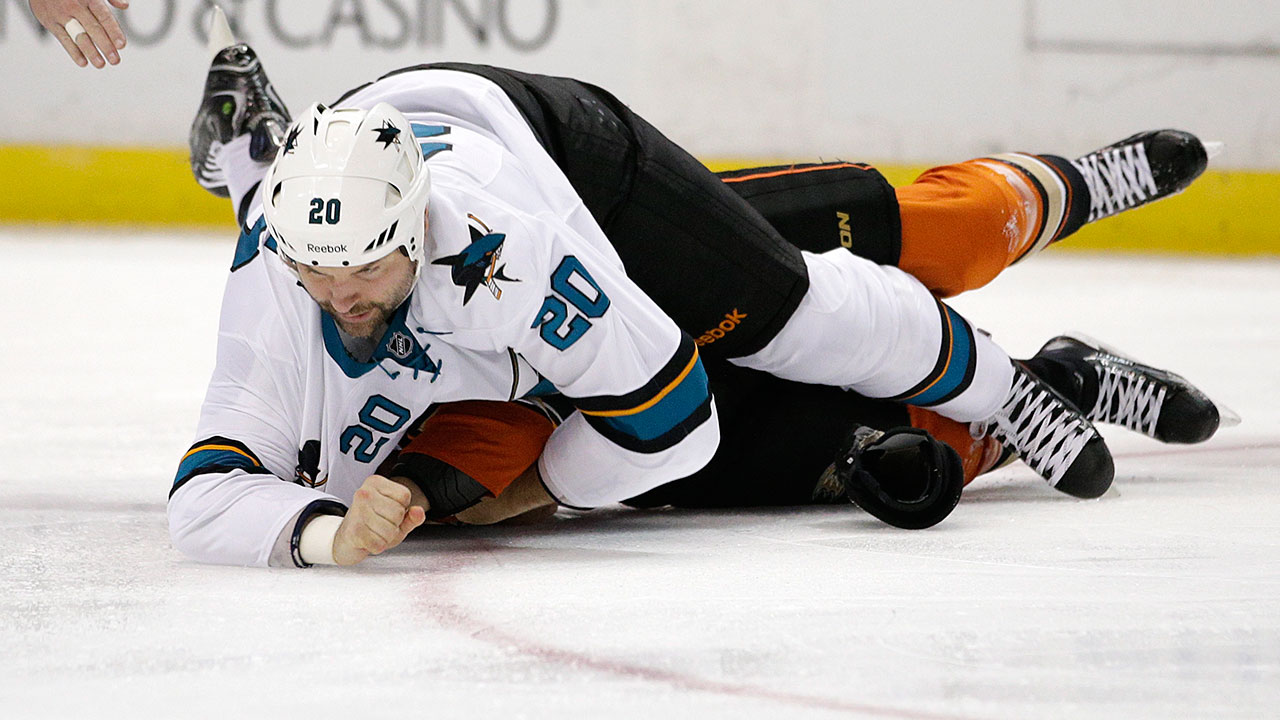It’s been a quiet year for NHL suspensions. As of the start of this week, there had been no suspensions whatsoever through the entirety of the preseason and the start of the regular season. John Scott and John Moore earned suspensions in the same week to break that welcome trend but even so things have been awfully peaceful for the league on the disciplinary front.
It’s a major shift from 2013-14, as Sportsnet’s suspension tracker makes clear. Even if we focus solely on players who received regular season suspensions (several others were fined and/or suspended for preseason games) we have 51 games in suspensions handed out by the NHL’s Department of Player Safety prior to Oct. 24 (the season started a week earlier that year):
Nor is this a new trend. It’s difficult to compare to 2012-13 because of a belated start to the year and the lack of a pre-season but in 2011-12 34 man-games worth of suspensions were announced by Oct. 13 (which corresponds to the same point of that season). In the post-Colin Campbell era of player suspension, we’re at a low water mark in terms of punished infractions. The question is why.
There are lots of possible answers to that question, but one of the most intriguing is the much-ballyhooed death of the enforcer. Many of last year’s fighting leaders are struggling to get into NHL games this year; even some of the players fortunate enough to have contracts are healthy scratches (Tom Sestito) or freshly bound for the minors (Rich Clune).
In many cases it’s the players allegedly out there to protect their teams that end up committing the most egregious offences. John Scott, one of the last of the breed, has one of the two suspensions assessed this season; last October he earned seven games for an elbow to the Bruins’ Loui Eriksson and it was his attempt to fight Phil Kessel in the pre-season that prompted David Clarkson to leave the bench to fight (earning the Leafs’ forward an automatic 10-game ban in the process). The worst incident of all last season involved another enforcer, Shawn Thornton, who brutally assaulted then-Penguins defenceman Brooks Orpik.
The profile of the players who fight frequently now is changing as the one-dimensional heavyweights are slowly weeded out of the game. In 2013-14, 10 players appeared in at least 20 games while averaging less than six minutes of ice-time per night; only one of them has played so much as an NHL game in 2014-15. Instead, the fights are coming from hard-nosed players who are expected to contribute to the game, guys like Tim Jackman, Cody McLeod and Matt Hendricks who do more than just fight.
This shift in focus matters, because a player who is expected to do more than play a physical game has less opportunity to be predatory on the ice. It’s not that the Jackmans and McLeods of the world won’t have opportunities to finish hits, but their job description requires more than running around and hammering opponents. They can’t afford to be as reckless because they still have to worry about the puck.
More NHL on Sportsnet:
Subscribe: Rogers GameCentre Live
Rogers Hometown Hockey | Broadcast Schedule
Sportsnet Fantasy Hockey Pool
It isn’t just that different players are fighting now; that part of the game has been in decline for ages and has fallen off again. HockeyFights.com notes 0.39 fights per game in 2014-15 as opposed to 0.38 one season ago, but that’s misleading, because fighting tends to slow down as the playoffs approach (and then all but disappear in the postseason). A year ago through this many games, there had been 75 fights. This season there have been just 57.
That matters, too, because while the pro-fighting crowd likes to paint pugilism as a way to reduce injuries (through the expedient of having a big man come and punch anyone who throws a dirty hit) there’s no evidence that fighting has a calming effect on the game. It’s entirely possible that it has the opposite effect – as it did in Steve Moore’s last NHL game when he bested Matt Cooke in a bout. What statistical work has been done in this area suggests that there’s actually a slight correlation between increased fighting and more injuries and stick work.
At this point, it’s premature to say that the reductions in both fighting and pure fighters is the reason for the remarkable lack of suspensions so far this season. The Department of Player Safety has a new head with the departure of Brendan Shanahan; it’s possible that Stephane Quintal and his staff have relaxed the standard somewhat. A more positive and equally plausible spin would be that after a rough learning curve NHL players are adjusting well to the new standards. Alternatively, it could just be that the NHL has had unusually good fortune in this area in the early going or that there’s some other factor we haven’t even considered.
But it’s awfully tempting to draw a direct link between the reduction in the number of enforcers and the improved on-ice discipline of NHL players. Even if we can’t do that, we can say that to-date the game hasn’t gotten dirtier as fighting has been reduced; if the theory that enforcers help prevent dirty play has a basis in fact it should mean that fewer fighters corresponds directly to an increase in cheap shots as the rats take over the game. We simply haven’t seen that.


